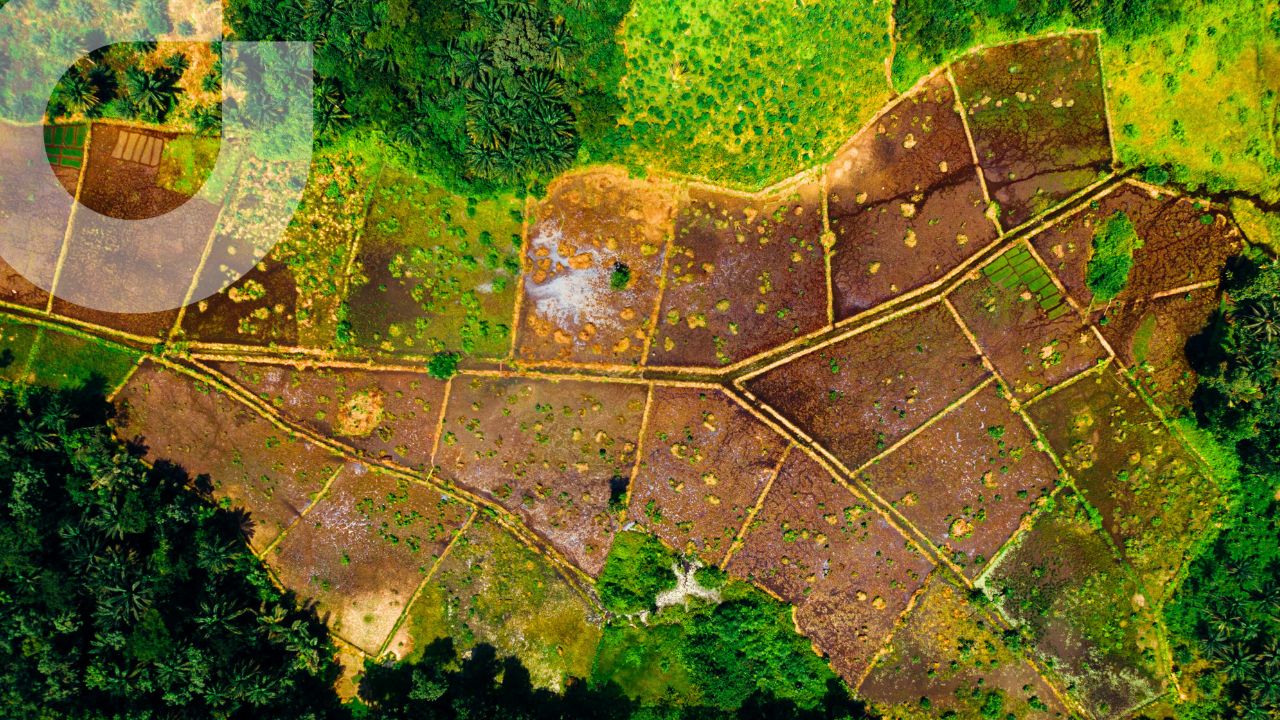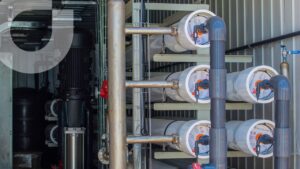Allow me, in this article, to speak not only from my position within the sector and as CEO of Almar Water Solutions, but also as an agricultural engineer, keenly aware of the critical role agriculture plays as the world’s largest consumer of water. Too often, the agricultural sector is omitted in conversations centered on drinking water for cities or process water for industry. However, it is indisputable that agriculture must be integral to any meaningful and sustainable approach to water resource management.
I see daily how the water crisis is fast becoming the silent epicentre of the global food crisis. While headlines often highlight climate change or geopolitical disruptions as threats to food systems, it is also the chronic underinvestment in agricultural water security, especially in irrigation, that may ultimately define whether we succeed or fail in feeding a world of 9.7 billion by 2050.
Water is not just a production factor. It is agriculture’s most limiting input, a determinant of yield variability, nutritional quality, and rural livelihoods. Without consistent and affordable water, farmers are trapped in a cycle of risk and underinvestment. In many regions, agricultural water security remains the missing element for scalable and sustainable food production.
The Paradox of Productivity Amid Declining Arable Land
Between 2001 and 2022, the global agricultural sector increased its land productivity by 59.7% (from USD 546 to USD 872 per hectare) despite a drastic 20% drop in cropland per capita (from 0.24 to 0.20 ha/person). This is an impressive social success, reflecting innovations in seeds, mechanisation, digital technologies, and improved logistics.
However, the global food system is not on track to meet the 50–70% increase in output needed by 2050. Annual agricultural production growth is currently averaging around 1.4%, while demand is rising at closer to 1.8–2.0%. This productivity gap is especially visible in Sub-Saharan Africa and parts of South Asia, where population growth is highest.
Moreover, global agricultural land has remained stable in absolute terms, at around 1.5 billion hectares, but the quality of land is deteriorating due to overuse, erosion, salinisation, and pollution. Nearly one-third of the world’s soils are moderately or highly degraded, according to FAO estimates. As such, water availability and soil health are intertwined challenges.
Irrigation: The Donwplayed Divide in Agricultural Opportunity
Globally, only about 20% of cultivated land is equipped for irrigation, yet this land contributes roughly 40% of global crop output. This underscores the leverage irrigation provides for food security. Irrigated lands have yields 2–3 times higher than rainfed systems.
However, this capacity is not evenly distributed. In Asia, 37% of farmland is irrigated; in Europe, 28%; in Latin America, 14%; and in Sub-Saharan Africa, just 6%. This disparity reflects both a historical underinvestment in water infrastructure and institutional barriers such as land tenure, weak water governance, and lack of access to finance.
The missed opportunity is immense. Sub-Saharan Africa holds about 202 million hectares of arable land, yet irrigates only around 12 million hectares. If even 10% of this land were equipped with efficient irrigation systems, regional output could rise dramatically, transforming Africa and increasing opportunities.
Groundwater Depletion and the Mirage of Abundance
The irony of modern irrigation is that it has often been built on unsustainable foundations. Around 38% of irrigation water comes from groundwater, and in many agricultural powerhouses, aquifers are being depleted at alarming rates.
In India, the world’s largest user of groundwater, 60% of irrigation water comes from aquifers. In states like Punjab and Haryana, over 70% of groundwater blocks are classified as “over-exploited” or “critical.” In China’s North Plain, groundwater tables are dropping by more than 1 meter per year in some areas.
Globally, FAO estimates suggest that annual groundwater withdrawal has reached between 950 and 1,000 km3, up from 100–150 km3 in 1950. This is a tenfold increase in 70 years. The environmental consequences (subsidence, salinity, and ecosystem collapse) are becoming more visible.
Farmers are already paying the price. In many regions, energy costs for pumping water now constitute up to 30% of total production costs. This reinforces a vicious cycle: more pumping, higher costs, lower margins, and less investment.
Desalination and Agriculture
Desalination holds promise, particularly in water-scarce but energy-rich countries. Yet its role in agriculture remains niche: less than 2% of global desalinated water is used in food production. That is beginning to change, albeit slowly.
As of 2024, the global desalination market reached 110 million m3/day capacity, with the MENA region accounting for nearly 50% of it. In Israel, desalinated water now provides 70% of municipal supply and up to 10% of total agricultural water when mixed with reused water.
Southern Spain’s Almería region showcases a high-value model: desalinated and water reuse for greenhouse vegetables with EU export demand. Here, water costs can reach €0.80/m3 but are viable due to the value of crops, public subsidies, and innovation.
Nevertheless, cost remains a barrier. Agricultural profitability in many regions cannot support water costs exceeding €0.15/m3. Energy intensity is another challenge: desalination consumes 3–5 kWh/m3 of water, making it climate-sensitive unless powered by renewables. In the Gulf, desalination accounts for up to 20% of national electricity consumption.
The Case for Smarter Irrigation Investment
Rather than expanding water use, we must optimise it. Precision irrigation (such as drip, sprinkler, and pivot systems) can cut water use by up to 50% while increasing yields by 15–25%. In Israel and parts of the U.S., these systems are standard. Globally, however, only 9–10% of irrigated land uses micro-irrigation.
Why? Barriers include high capital expenses, limited access to credit, poor farmer training, and lack of extension services. Public-private partnerships (PPPs) can help overcome these barriers. So can climate finance, if irrigation is reframed as an adaptation strategy.
According to the World Bank, annual investment needs for sustainable irrigation expansion and modernisation are around $22–24 billion globally. That’s less than 3% of the $800 billion in yearly global agricultural subsidies—yet irrigation remains underfunded.
As water scarcity intensifies and agriculture remains the largest consumer of global freshwater resources, a new generation of technologies is reshaping how we manage water in the sector. AI is emerging as a meaningful tool in real-time irrigation management, enabling dynamic assessment of crop water needs and optimal scheduling to minimise evapotranspiration losses and enhance overall efficiency. Complementing this digital precision is the strategic potential of systematic aquifer recharge, particularly relevant in countries such as Spain where desalination or advanced tertiary treatment plants frequently operate below capacity. Rather than remaining idle during periods of low demand, these facilities could be repurposed to consistently replenish overexploited aquifers through managed aquifer recharge and seasonal infiltration techniques. In parallel, sensible use of medium-salinity water (through controlled blending of brackish sources with freshwater or treated effluent) is expanding the boundaries of viable irrigation, albeit with the need for rigorous salinity monitoring and agronomic expertise. Finally, advances in crop science are enabling the cultivation of varieties resilient to mineral-laden and saline soils, unlocking agricultural potential in marginal lands where conventional crops would falter. Taken together, these approaches form a cohesive strategy that not only enhances water efficiency but also builds long-term resilience into agricultural systems facing signficant environmental and resource constraints.
Let us treat water not as an invisible input, but as a strategic asset. As leaders in the water sector, we must elevate this agenda.







